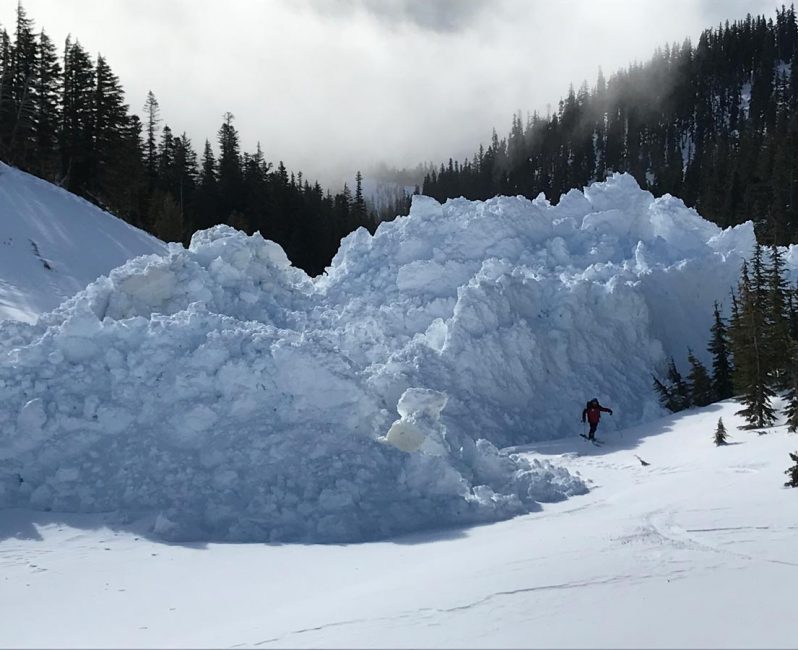A pair of enormous human-caused avalanches on Mount Hood have forced Mt. Hood Meadows to close down Heather Canyon at least through the weekend.
The “artillery-triggered” avalanches left behind a 20-foot crown and piles of debris 30 feet high. One avalanche broke free in the area above A-Zone known as the Basalts; the other started up in Super Bowl, above Heather and Clark Canyons. This photo from the Meadows Ski Patrol gives a sense of the scale and power involved:
Note the formation of the snow in that photo. Snow heats up rapidly when it slides, leaving behind densely packed forms that can be extremely difficult to navigate or dig through.
Meadows’ Snow Safety Supervisor Brian Murphy reports that the slides “have created a hazard that will make both egress for the skiing public as well as rescue very challenging.” The fresh slide zones could also trigger additional slides, leading to Murphy’s decision to close Heather and Clark at least through the weekend:
Historically these large avalanches have been followed by multiple large avalanche events when followed by large weather events. It is our belief that once a track has been put in it is easier for other large avalanches to follow the same track and run farther than the previous, as evident in the 2010/2011 events.
We are set up to receive a considerable amount of snowfall over the next few days and through the weekend, which concerns us for further re-loading and repeat avalanche events.
We will be keeping Heather Canyon closed at least through the weekend. We will continue to evaluate how much of the debris is filled in with the incoming snow and what machinery we can utilize in order to create egress from Heather Canyon, once the weather clears.
The 2010-2011 events that Murphy references brought snow slides that reached all the way down to the base of Heather Chair.
Murphy and his snow safety colleagues on Mount Hood routinely use Howitzers and artillery to trigger avalanches when steep areas are empty of people, especially in the early mornings before powder days. The activity is permitted by the U.S. Forest Service at ski areas throughout the American West and standard procedure at major resorts.
Spokesman Dave Tragethon says Meadows has been using artillery since 2002 or so, with careful precautions and extensive training. Artillery “allows our teams to more efficiently complete their missions,” Tragethon says.
Avalanche control is a specialized field that can turn quite tricky in hazardous conditions. Avalanches have taken the lives of many a backcountry expert, including the legendary Oregon backcountry guide Rick “Oz” Oswald and the former head of the Meadows Ski Patrol, Jeff Wong.
Snow safety pros use weather data, observations and on-the-mountain expertise to determine where and when to blast, and how large of a charge to use. When the snow is deep and heavy it can be very difficult to predict how large the triggered avalanche will be. That can lead to surprising and in some cases terrifying results, such as the human-caused avalanche a few years ago at Crystal Mountain that famously destroyed Crystal’s Chair Six. If you haven’t seen the “Chair six is Gone, Dude” video documenting that avalanche and its aftermath, check it out. It provides another reminder of the awesome power of a steep mountainside loaded with snow, blasted into action.
STOHKE captures aftermath…Avalanche destroys a ski lift at Crystal Mountain, Washington on March 10, 2014. from Stohke on Vimeo.
Last modified: April 12, 2019




